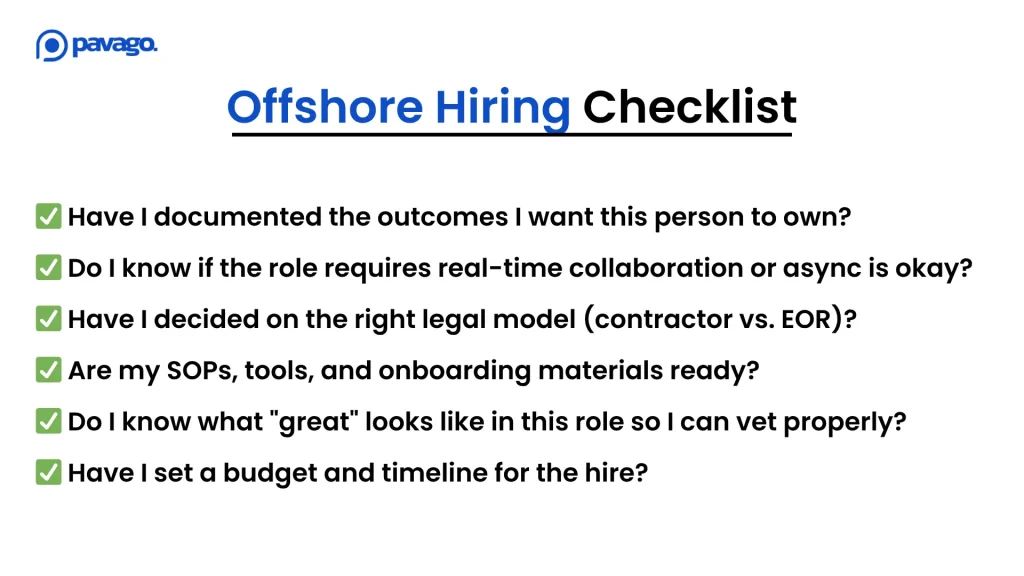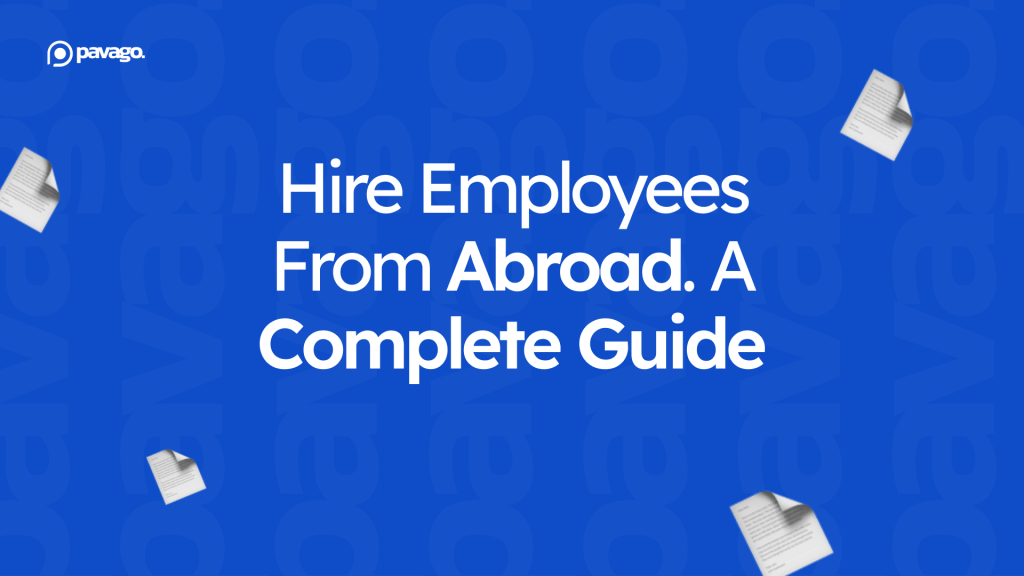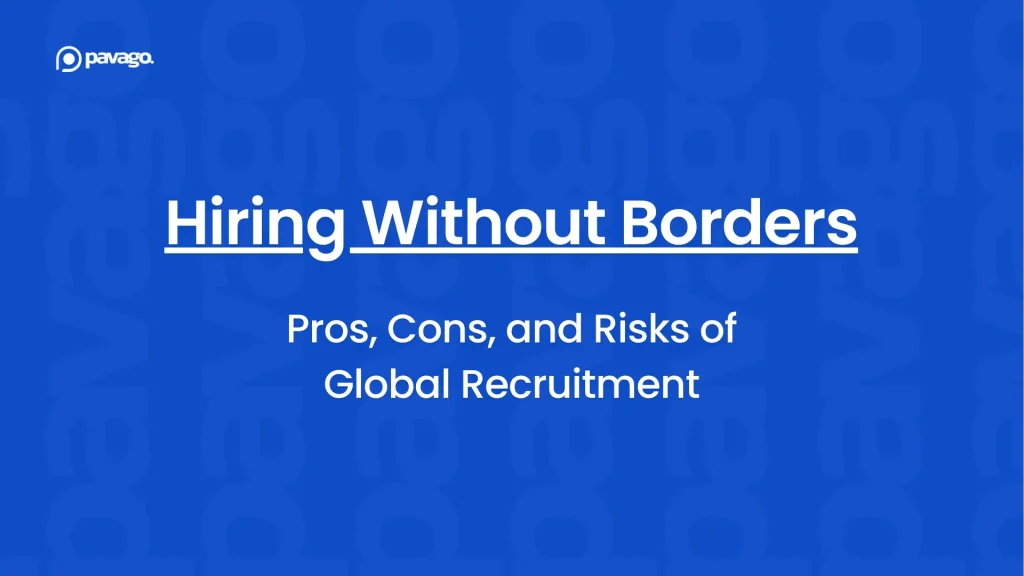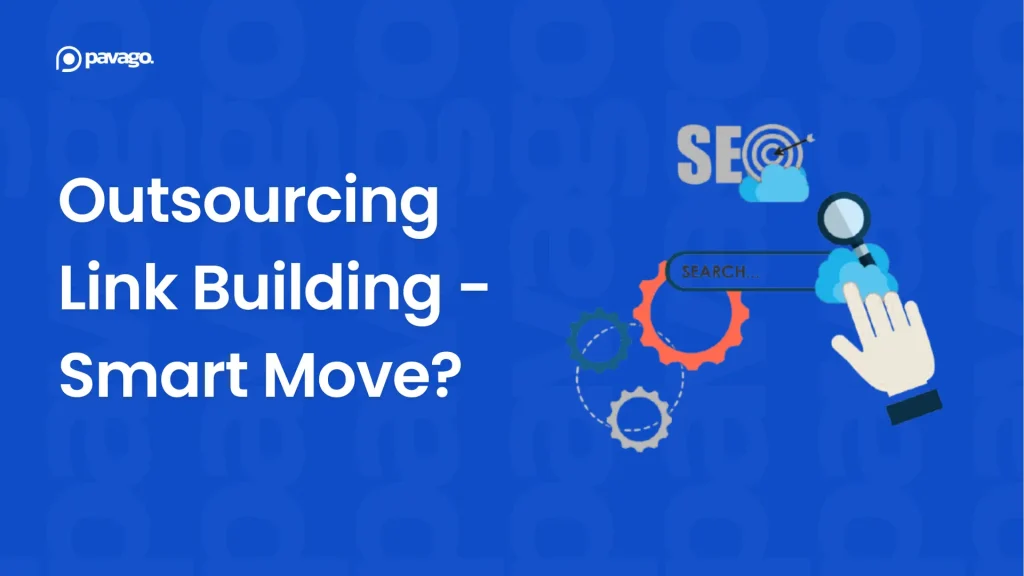Hiring overseas used to sound like something only big corporations did. But now? It’s one of the smartest — and most affordable — ways for small businesses to grow faster without breaking the bank.
Whether you’re looking for a virtual assistant, marketing support, finance help, or an ops manager, tapping into the global talent pool can unlock serious savings, deeper expertise, and faster growth.
But hiring employees from abroad comes with questions:
- What’s legal?
- How do I pay them?
- What roles make sense?
- How do I avoid the risks?
This guide breaks it all down in plain English. No jargon. No fluff. Just the stuff you actually need to know to make offshore hiring work for your business.
First Things First: Why Hire Employees from Abroad?
Here’s why more U.S. small businesses are hiring offshore talent:
- Cost savings: Save 50–80% compared to local hires, without sacrificing quality
- Access to talent: Broaden your search beyond your zip code or time zone
- Scalability: Build teams faster, especially in operations, marketing, finance, and support
- Global coverage: Get work done around the clock with distributed teams
If that’s not convincing enough, you should watch this:
What Types of Roles Can Be Hired Internationally?
You don’t need to hire offshore for every role, but some functions are especially well-suited:
| Department | Ideal Offshore Roles |
|---|---|
| Admin/Back Office | Executive Assistant, Virtual Assistant, Scheduler |
| Finance | Bookkeeper, Payroll Specialist, Controller |
| Sales | SDR, Appointment Setter, CRM Assistant |
| Marketing | Content Writer, Designer, Ads Specialist |
| IT & Engineering | Web Developer, Software Engineer, Cyber Security Specialist |
How Much Does It Cost to Hire Internationally?
Costs vary by country, role, and experience, but here’s a general idea:
| Role | Typical Monthly Cost (Full-Time) |
|---|---|
| Executive Assistant | $800–$1,500 |
| Bookkeeper/Finance Admin | $1,000–$2,000 |
| SDR / Appointment Setter | $1,200–$2,500 |
| Marketing Specialist | $1,500–$3,000 |
| Operations Manager | $2,000–$4,000 |
Legal Considerations When Hiring Employees from Abroad
You can’t just Venmo someone abroad and call it a hire.
Here are the 3 most common models:
1. Independent Contractor: You pay the person directly as a freelancer. No local entity required. Best for short-term or part-time work. Downside: not compliant in every country if they’re working full-time only for you.
2. Employer of Record (EOR): A third-party service becomes the legal employer and handles compliance, taxes, and benefits. Best for full-time, long-term roles where compliance matters.
3. Direct Entity Hire: You set up a legal entity in another country and hire through it. High cost and complexity — rarely recommended unless you’re scaling a physical presence abroad.
Best Option for SMBs: Contractors + EOR support. It keeps things lean while staying compliant.
Not sure how to handle contracts or compliance?
Pavago handles the entire contractor + EOR setup for you — so you can hire fast and stay fully compliant without lifting a finger.
How to Source Top-Tier Talent from Abroad
Option A: Do it yourself
- Use platforms like Upwork, OnlineJobs.ph, Remote OK
- Post jobs in country-specific Facebook or LinkedIn groups
- Ask for referrals from existing remote workers
This route is low-cost but high-effort. Expect to sort through 20+ applicants per role.
Option B: Use a vetted recruitment service
- Firms like Pavago specialize in hiring A-player talent for small businesses
- You get pre-screened candidates, cultural alignment, and support with hiring, contracts, payroll, and onboarding
It saves you weeks and avoids costly mis-hires.

Common Mistakes to Avoid When Hiring Employees from Abroad
Even with the best intentions, small business owners often run into avoidable issues when building global teams.
Here are five of the most common offshore outsourcing mistakes we see — and how to avoid them:
1. Hiring too fast without clear expectations
Rushing to fill a role without defining responsibilities, KPIs, or communication norms almost always backfires. Document the outcomes you expect, how you want work delivered, and when you’ll review progress, before you hire.
2. Assuming great offshore talent = cheap, low-skill labor
This mindset leads to underpaying and undervaluing talent. Offshore hiring works best when you seek A-players and pay them fairly (even if it’s 60–70% cheaper than the U.S.).
3. Poor onboarding and training
You can’t just hand off a task and expect magic. Spend the first week onboarding your remote hire — with Loom videos, SOPs, tools walkthroughs, and context. Think of it as training a long-term team member, not a freelancer.
4. Not setting time zone boundaries
When hiring employees from abroad, be clear and upfront about availability expectations. Are you expecting 9–5 U.S. hours, or async delivery? Clear communication here prevents burnout or misalignment.
5. Failing to build systems before hiring
The best offshore hires can’t save a broken process. Tools like ClickUp, Notion, or Airtable give your hire structure. Without them, you’ll create more work for yourself instead of less.
Want to skip the learning curve? Let Pavago handle the hard stuff — vetting, onboarding, compliance — so you don’t waste time on bad hires or broken systems.
Quick Hiring Checklist
If you’re serious about hiring employees from abroad, run through this checklist before you post the role or contact a recruiter:

If you can’t check most of these, don’t panic — but pause. Getting these things straight before you hire will save you 10x the time (and headaches) later.
Wrapping It Up
If you’re doing everything yourself or struggling to scale with local talent, hiring employees from abroad gives you a new level of leverage.
You can hire faster and get access to A-players while saving 50%-60% on salaries.
And with the right support, it’s not just affordable — it’s frictionless.
Let’s make hiring abroad a growth move — not a gamble.
Book a call with Pavago and we’ll show you how to scale your team globally without the stress.
















